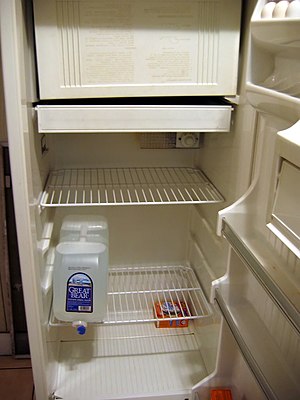- "The best way to spend your money is to spend it on time, not on stuff." http://su.pr/2tr5iP #
- First bonus by stock options today. Not sure I'm impressed. #
- RT @chrisguillebeau: US border control just walked the train asking "Are you a US citizen?" Native American guy says: "One of the originals" #
- @FARNOOSH My credit score is A measure of my integrity not THE measure. in reply to FARNOOSH #
- I'm listening to a grunge/metal cover of "You are my sunshine" #
- There's something funny about a guy on reality TV whining about how private he is. #LAInk #
Crying is for Winners
Have you ever seen a kid come off a wrestling mat, crying his eyes out because he lost?

Often, that kid will get told to be tough and stop crying.
That’s wrong.
I’m not opposed to teaching kids not to cry under most circumstances, but just after an intense competition, I love it. It’s the best possible sign that the kids was pouring his soul into winning. It means he was trying with everything he had.
It means he is–or will be–a winner.
When a kid, particularly a boy in a tough sport, is crying, you know he’s going to try harder and do better next time.
For all of the “tough guy” ability it takes to succeed as a wrestler, I’ve never seen another wrestler teasing the crier. They’ve all been there. Wrestling is a team sport, but you win or lose a match on your own. When you step out in front of hundreds of people and spend 3 to 6 minutes giving every ounce of everything you have to give, only to find it’s not good enough, you’ll often find you don’t have the final reserve necessary to control your emotions.
This is different than a kid crying because he lost a game, just because he lost. Some kids feel entitled to win anything they do, regardless of the effort they put it. That’s also wrong.
Crying at a loss is okay after putting in maximum effort and full energy, not because the dice went the wrong way.
Repair Plans, Appliances, and Rancid Meat…Oh, My!

- Image via Wikipedia
We recently had our annual barbecue. (For the purists, I am Minnesotan. Barbecue means “cooked over fire”.) Due to massive scheduling conflicts, it was a bit smaller than normal; only about 20 people came. At least 10 other people RSVP-ed that they were going to make it, but didn’t. Grr.
Naturally, we had food for everyone said they would be there and enough for half of the people who didn’t say anything, since Minnesotans don’t RSVP well. That translates to a lot of leftovers. No problem. After all, leftover ribs are hardly a punishment.
Sunday morning, we woke up to find that our refrigerator was happier at room temperature than the standard “cold”. We didn’t know it at the time, but the defrost unit was borked, so the cold air couldn’t circulate from the freezer to the refrigerator. Bye-bye leftovers. Hello, Mr. Repairman. We needed an excuse to clean out the fridge, anyway, but not at the price of my beautifully seared meat! (Sadness strikes.)
Monday evening, the repairman came out, worked for 2 hours and left a functional refrigerator and a $240 invoice in his wake. Thankfully, we are on the appliance repair plan through the gas company. We pay $26.40 per month to cover repairs to our range, water heater, furnace, drier, sewer main, and refrigerator. The first four items are standard, the final two are options that cost extra.
We originally got on the plan for the sewer main. We had a tree whose roots grew into the main and clogged it every year. A backed-up sewer main is a crappy way to wake up. Getting that snaked to the street cost $200 per year. At the time, without the refrigerator, the plan cost about $12 per month. One $200 call-out more than paid for the plan for the year. That was easy math. Now, our 20 year old refrigerator has been repaired twice in the last year, giving us $500 worth of repairs for $316.80. I would like to take this time to thank all of the people with reliable appliances for subsidizing my repairs.
My furnace, drier, and range are all reasonably new and shouldn’t need repairs any time soon, but the refrigerator and sewer main have paid for the plan themselves, several times over.
Should you get a similar plan? If your covered appliances are more than 4-5 years old, I would consider it. If they are more than 10 years old, I wouldn’t hesitate at all. Repairing quality appliances is cheaper than replacing them, especially when the repair cost is paid monthly and subsidized.
Do you use a service plan?
New Year Goals
I’m not a fan of New Year’s Resolutions. They are generally drunken promises made on December 31st that are broken by the middle of January, if they are remembered at all. I don’t make resolutions.
My goal for 2010 is to complete one major self-improvement project each month. That’s an entire year of 30-day projects. As each month goes on, I will be updating this blog with the status of each project. Some of the projects will be physical, some will be mental, some will be improvements on my relationships. My goal is to do something meaningful, useful and challenging each month.
Here’s my list:
- January: Wake up at 5am AND read to my kids every night before bed.
- February: Do 100 push-ups at one time by the end of the month. There is also a secret project this month. I’ll be keeping notes and posting in March.
- March: Do 100 sit-ups at one time by the end of the month.
- April: Spring Cleaning. I will declutter every room in my house this month.
- May: Have a sit-down dinner with my family, at the dining room table at least 3 times per week.
- June: No computer use, while anyone else in the family is awake, except for household necessities, such as bills.
- July: Write fiction every day.
- August: Buy nothing new this month.
- September: Attempt to learn a new language. http://ijaar.com/29-free-websites-to-learn-a-new-language/
- October: No yelling at the kids.
- November: No complaining. Not at home, not at work.
- December: I will have done 14 projects this year. December is a month off.
Regret
There comes a time when it’s too late to tell people how you feel.
There will come a day when the person you mean to talk to won’t be there. Don’t wait for that day.
“There’s always tomorrow” isn’t always true.
What Is Your Binary Options Strategy?
 When you are just entering the world of binary options trading or investing, you may be on the receiving end of a lot of advice. It is not uncommon to hear people tell you to implement different gambling strategies because binary options are based on chance more than anything else. You will also hear a lot of advice from those who say there are many good ways to develop an effective strategy using indicators and market signals. Some will insist that with proper analysis of market data, a solid strategy can be developed too.
When you are just entering the world of binary options trading or investing, you may be on the receiving end of a lot of advice. It is not uncommon to hear people tell you to implement different gambling strategies because binary options are based on chance more than anything else. You will also hear a lot of advice from those who say there are many good ways to develop an effective strategy using indicators and market signals. Some will insist that with proper analysis of market data, a solid strategy can be developed too.
Are they all correct? Interestingly enough, the answer is yes. The reason for this is simple, and as one expert writes, “there is no such thing as a perfect strategy for every trader. There is only a best strategy for each individual trader.” Thus, your strategy has to be shaped around a few things:
- Your willingness and ability to follow your chosen strategy.
- Your personality. For instance, are you restless if you are taking the safe route or a higher risk strategy?
- Your budget and goals,
Identifying the answers to these questions is the first step to formulating a strategy. You should also understand that the winning percentage of most strategies will be somewhat constant, but the total number of successful trades varies on an individual basis and is based entirely on the strategies used.
For instance, some investors want a high percentage of winning trades and are more comfortable with risk averse trading. Others are ready to take more risk and are entirely comfortable winning fewer trades if the returns on winning trades are dramatically higher. This enables them to implement higher risk trades. The interesting thing about strategies and the kinds of trades they generate is that they are all built from the same data.
The Data of Strategy
For example, almost all strategies will look at issues like market trends, trading trends, highs and lows, reversals, and various kinds of indicators. The reason that high and low trends pay off in strategy development is simple: binary options trading applies to whether or not an asset rises above a strike price or doesn’t. It is the proverbial “yes or no” part of the proposition and analysis for either outcome pays off.
As an example, a lot of risk-averse investors will look for breakouts. They use these for trend line investing, which can be as brief as sixty seconds to a day, but can be used to coordinate investing in the direction of a short trend. Although this seems complex, it really is not. The key is that analysis cannot be broad and across all available markets. Instead, focused analysis on a specific area will allow even a novice investor to analyze for a breakout and then invest in binary options accordingly.
Just being able to detect a reversal or a downward trend over the course of a day can yield a very rewarding investment. The key is to understand your strategy based on your budget, personality, and your ability to stick with the strategy, even if it does not yield immediate success. When you do this, and use the right tools for analysis, you can create an effective strategy that brings you closer to your goals.
This is a guest post.

